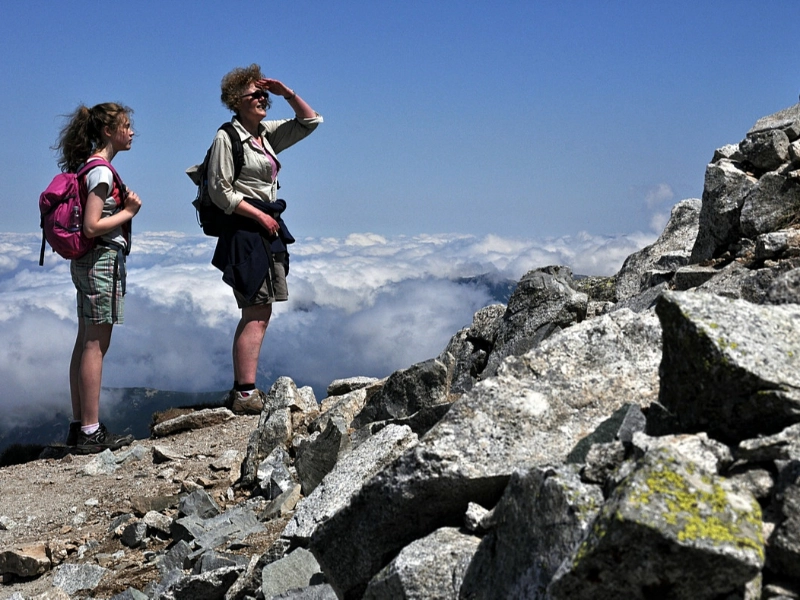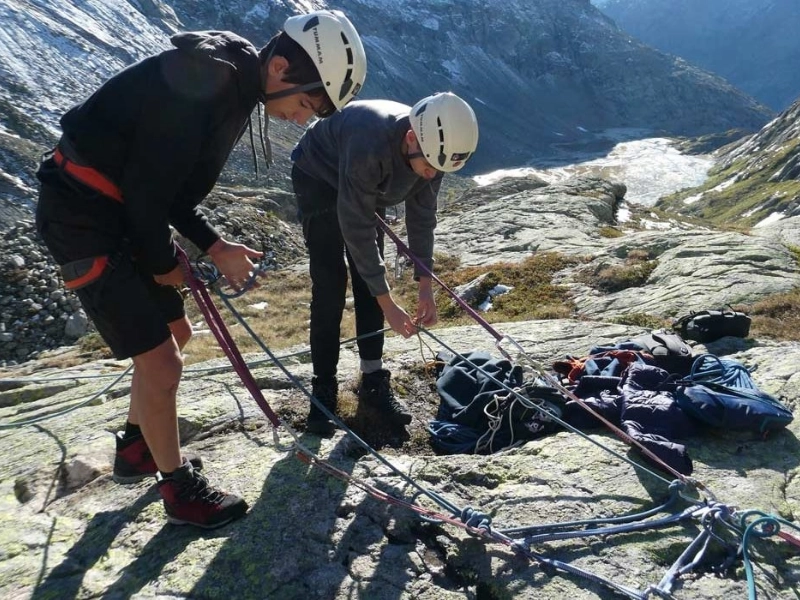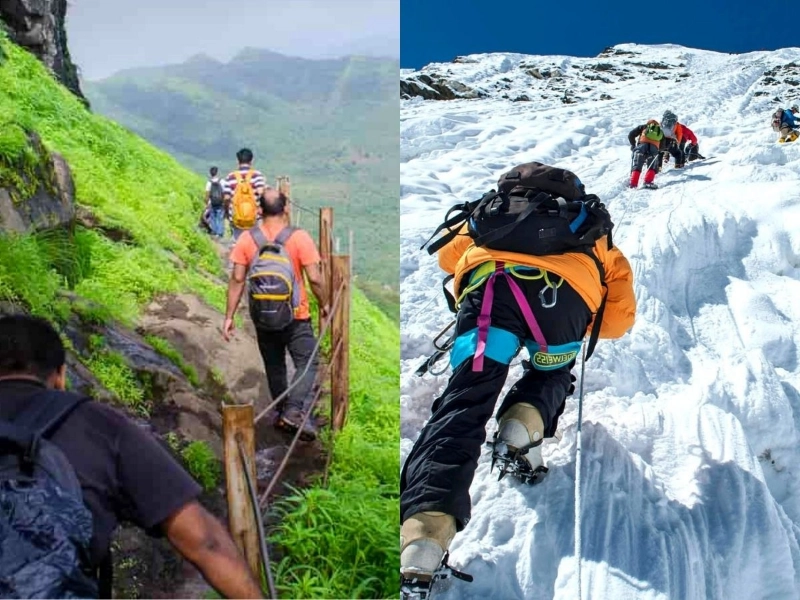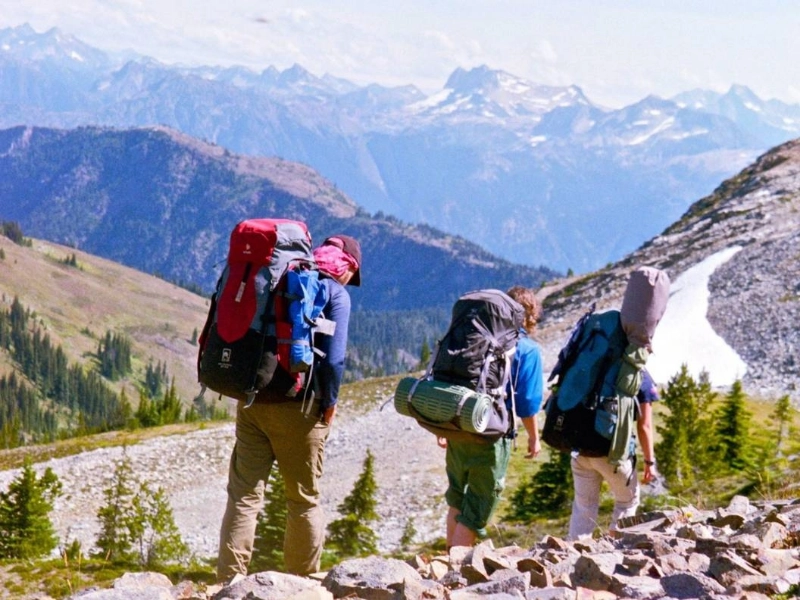A multipurpose bodyweight exercise, mountain climbers work a variety of upper and lower body muscular groups. The action is also excellent for strengthening the core because it introduces a degree of instability. For balance, start in a high plank position and equally split your weight between your hands and feet. Raise your left knee to your chest, and then reopen it. Follow through at a speed that works for you.
 A strong core is essential for maintaining body stability, reducing spinal movement, and enhancing neuromuscular coordination when climbing. Although mountain climbers are a great way to strengthen your abs, they also work a lot of other core and upper body muscles.
Your arms are raised and supported during the exercise by the triceps, deltoids, and serratus anterior. To help you raise your legs toward your chest and back into the plank position, your quadriceps and hip flexors flex your knees.
While mountain climbers certainly work your pectoral muscles, it's crucial to remember that they're not the best workout for developing big chest muscles or improving the appearance of your shoulders. Because of this, experienced athletes may include them in a specific training regimen to increase size and strength in these areas. To avoid joint stress, it's crucial for novices to focus on maintaining their shoulders directly over their wrists throughout the exercise.
A strong core is essential for maintaining body stability, reducing spinal movement, and enhancing neuromuscular coordination when climbing. Although mountain climbers are a great way to strengthen your abs, they also work a lot of other core and upper body muscles.
Your arms are raised and supported during the exercise by the triceps, deltoids, and serratus anterior. To help you raise your legs toward your chest and back into the plank position, your quadriceps and hip flexors flex your knees.
While mountain climbers certainly work your pectoral muscles, it's crucial to remember that they're not the best workout for developing big chest muscles or improving the appearance of your shoulders. Because of this, experienced athletes may include them in a specific training regimen to increase size and strength in these areas. To avoid joint stress, it's crucial for novices to focus on maintaining their shoulders directly over their wrists throughout the exercise.
 Mountain climbers need to have strong lower body muscles in order to stay balanced and stable. The core muscles (transverse abdominis, rectus abdominis, obliques, and lats) are worked as you draw one knee toward your chest and then lower it to the floor. Your hip flexors and quadriceps assist in extending your knees and hips. As you maintain your arms in a high plank posture, mountain climbers also work your shoulders and arm muscles.
Mountain climbers' rapid leg switching raises your heart rate, which improves cardiovascular endurance and burns calories. Your calorie burn and the definition of your shoulder, back, and core muscles will increase with the number of mountain climbers you execute. You can make the classic mountain climber workout easier by raising your hands on a bench or step if you find it too difficult. After that, perform the required number of repetitions by switching between placing your left and right knees close to your chest.
Mountain climbers need to have strong lower body muscles in order to stay balanced and stable. The core muscles (transverse abdominis, rectus abdominis, obliques, and lats) are worked as you draw one knee toward your chest and then lower it to the floor. Your hip flexors and quadriceps assist in extending your knees and hips. As you maintain your arms in a high plank posture, mountain climbers also work your shoulders and arm muscles.
Mountain climbers' rapid leg switching raises your heart rate, which improves cardiovascular endurance and burns calories. Your calorie burn and the definition of your shoulder, back, and core muscles will increase with the number of mountain climbers you execute. You can make the classic mountain climber workout easier by raising your hands on a bench or step if you find it too difficult. After that, perform the required number of repetitions by switching between placing your left and right knees close to your chest.
 The capacity to exercise for lengthy periods of time at a moderate to high intensity is known as cardiovascular endurance, or aerobic endurance. Exercising in the gym, running alongside friends, or preparing for a marathon—enhancing cardiovascular endurance can help you push yourself through your routines and meet your fitness objectives.
Your heart, blood vessels, and lungs make up your body's cardiovascular system. Getting oxygen-rich blood to your working muscles is its responsibility. Higher-intensity exercise puts more strain on your heart and lungs to meet your body's need for oxygen.
Your personal fitness trainer can evaluate your cardiovascular endurance using either the YMCA 3-minute Step Test or the Rockport Walk Test, two exercise testing procedures. Nonetheless, a submaximal treadmill test conducted in a lab by a fitness expert is the most precise method of determining your VO2 max.
The capacity to exercise for lengthy periods of time at a moderate to high intensity is known as cardiovascular endurance, or aerobic endurance. Exercising in the gym, running alongside friends, or preparing for a marathon—enhancing cardiovascular endurance can help you push yourself through your routines and meet your fitness objectives.
Your heart, blood vessels, and lungs make up your body's cardiovascular system. Getting oxygen-rich blood to your working muscles is its responsibility. Higher-intensity exercise puts more strain on your heart and lungs to meet your body's need for oxygen.
Your personal fitness trainer can evaluate your cardiovascular endurance using either the YMCA 3-minute Step Test or the Rockport Walk Test, two exercise testing procedures. Nonetheless, a submaximal treadmill test conducted in a lab by a fitness expert is the most precise method of determining your VO2 max.
 Although mountain climbers work your abs, they're also a great way to improve hip stability and mobility. They're commonly thought of as core exercises. It takes a lot of coordination and stabilization to be able to drive your knees up toward your chest while maintaining a plank position, according to Joi.
Letting the hips rise above the shoulders is a common mistake made by mountain climbers, which can weaken the core and raise the risk of injury. Focus on maintaining a flat back and using your core to keep your hips stable to avoid this.
Try incorporating a rotational aspect into the mountain climber exercise by pushing your right knee toward your left upper arm and then back to the beginning position if you want to push your core even harder. For the required number of repetitions, repeat this. As an alternative, to relieve some of the strain on your arms, shoulders, and wrists, elevate your upper body on a bench or step.
Although mountain climbers work your abs, they're also a great way to improve hip stability and mobility. They're commonly thought of as core exercises. It takes a lot of coordination and stabilization to be able to drive your knees up toward your chest while maintaining a plank position, according to Joi.
Letting the hips rise above the shoulders is a common mistake made by mountain climbers, which can weaken the core and raise the risk of injury. Focus on maintaining a flat back and using your core to keep your hips stable to avoid this.
Try incorporating a rotational aspect into the mountain climber exercise by pushing your right knee toward your left upper arm and then back to the beginning position if you want to push your core even harder. For the required number of repetitions, repeat this. As an alternative, to relieve some of the strain on your arms, shoulders, and wrists, elevate your upper body on a bench or step.